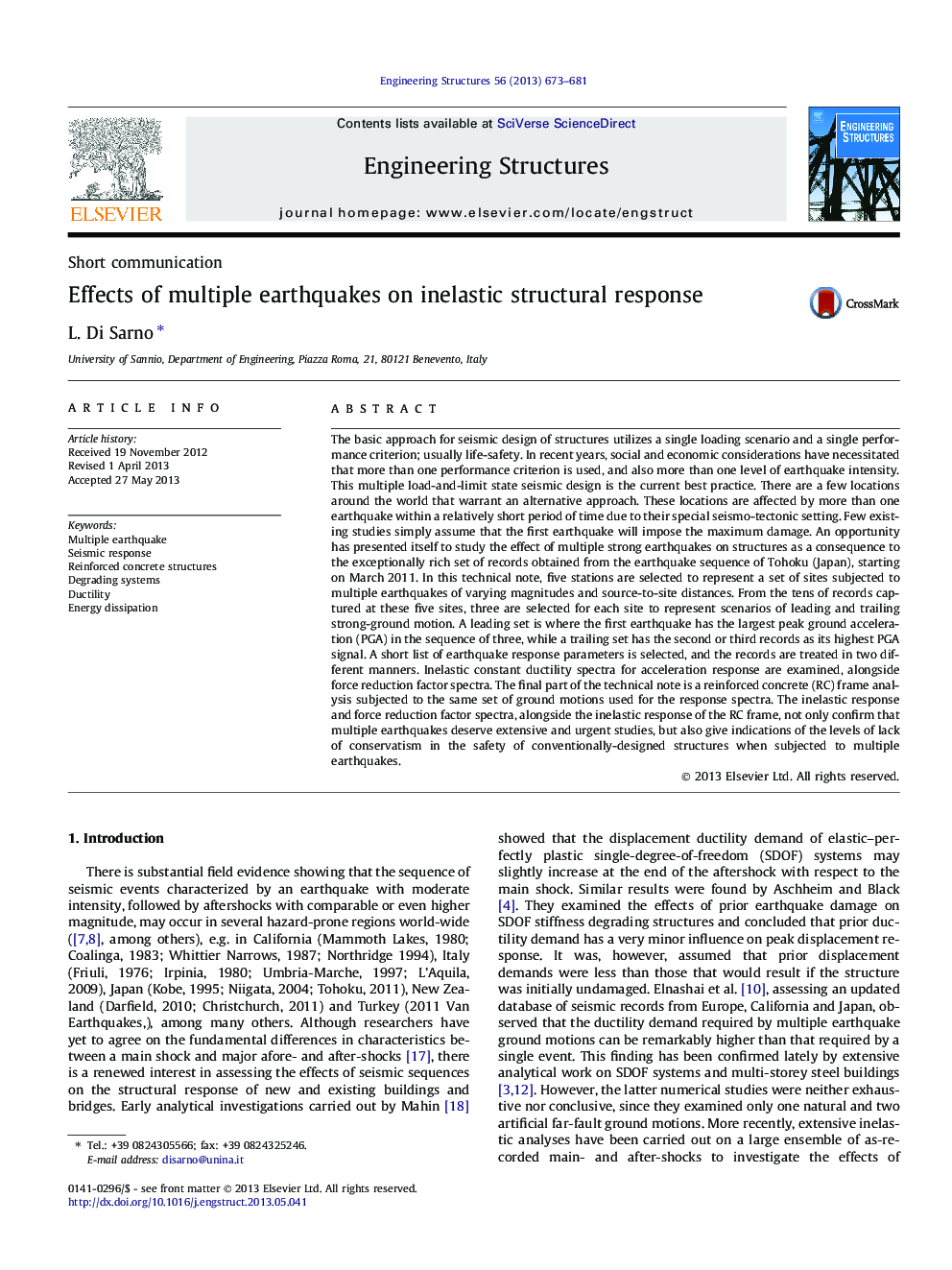| Article ID | Journal | Published Year | Pages | File Type |
|---|---|---|---|---|
| 6741381 | Engineering Structures | 2013 | 9 Pages |
Abstract
The basic approach for seismic design of structures utilizes a single loading scenario and a single performance criterion; usually life-safety. In recent years, social and economic considerations have necessitated that more than one performance criterion is used, and also more than one level of earthquake intensity. This multiple load-and-limit state seismic design is the current best practice. There are a few locations around the world that warrant an alternative approach. These locations are affected by more than one earthquake within a relatively short period of time due to their special seismo-tectonic setting. Few existing studies simply assume that the first earthquake will impose the maximum damage. An opportunity has presented itself to study the effect of multiple strong earthquakes on structures as a consequence to the exceptionally rich set of records obtained from the earthquake sequence of Tohoku (Japan), starting on March 2011. In this technical note, five stations are selected to represent a set of sites subjected to multiple earthquakes of varying magnitudes and source-to-site distances. From the tens of records captured at these five sites, three are selected for each site to represent scenarios of leading and trailing strong-ground motion. A leading set is where the first earthquake has the largest peak ground acceleration (PGA) in the sequence of three, while a trailing set has the second or third records as its highest PGA signal. A short list of earthquake response parameters is selected, and the records are treated in two different manners. Inelastic constant ductility spectra for acceleration response are examined, alongside force reduction factor spectra. The final part of the technical note is a reinforced concrete (RC) frame analysis subjected to the same set of ground motions used for the response spectra. The inelastic response and force reduction factor spectra, alongside the inelastic response of the RC frame, not only confirm that multiple earthquakes deserve extensive and urgent studies, but also give indications of the levels of lack of conservatism in the safety of conventionally-designed structures when subjected to multiple earthquakes.
Related Topics
Physical Sciences and Engineering
Earth and Planetary Sciences
Geotechnical Engineering and Engineering Geology
Authors
L. Di Sarno,
